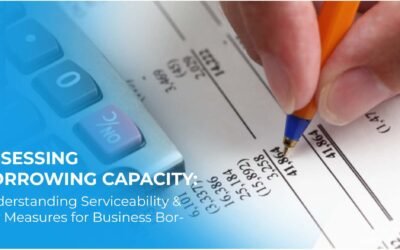Understanding Ratios in Commercial Lending

Unlocking Financial Insights with Ratios in Commercial Lending to the world of commercial lending, ratios serve as powerful tools that provide valuable insights into a business’s financial standing and potential creditworthiness. These key metrics enable lenders to make informed decisions, assess risk, and determine suitable loan structures for borrowers. From evaluating profitability and liquidity to monitoring financial performance over time, ratios play a crucial role in guiding lending strategies and ensuring sustainable financial success.
Ratios
Ratios play a crucial role in commercial lending, as they provide valuable insights into the financial health and performance of a business. Lenders use ratios to assess the borrower’s creditworthiness, evaluate risk, and make informed decisions regarding loan approvals, terms, and conditions.
Here’s how ratios are used in commercial lending:
- Creditworthiness assessment: Lenders analyze various ratios to determine the borrower’s ability to repay the loan. Ratios such as debt service coverage ratio (DSCR), which compares cash flow to debt obligations, and current ratio, which measures liquidity, help assess the borrower’s financial strength.
- Risk evaluation: Ratios assist in evaluating the risk associated with lending to a particular business. Lenders examine ratios like leverage ratios (debt-to-equity, debt-to-assets) to assess the borrower’s financial leverage and determine if they are within acceptable limits.
- Industry benchmarking: Ratios provide a basis for comparing a borrower’s financial performance against industry standards and peers. This analysis helps lenders understand how the borrower’s financial position and performance stack up against industry norms and identify any potential strengths or weaknesses.
- Trend analysis: Lenders review ratios over multiple periods to identify trends and patterns in a borrower’s financial performance. This analysis helps assess the borrower’s historical financial stability, growth prospects, and ability to withstand economic fluctuations.
- Loan structuring: Ratios assist in determining appropriate loan structures. For example, the loan-to-value ratio (LTV) helps determine the maximum loan amount based on the value of the collateral provided by the borrower.
- Loan monitoring: Lenders use ratios as part of ongoing loan monitoring to track the borrower’s financial performance and ensure compliance with loan covenants. Regular analysis of ratios helps lenders identify early warning signs of financial distress and take appropriate actions.
It’s important to note that the specific ratios used and their significance may vary depending on the lender, industry, and nature of the loan. Lenders often consider a combination of ratios and other factors to make comprehensive lending decisions.
CONCLUSION
In the realm of commercial lending, understanding and utilizing ratios is essential for assessing the financial health of businesses and making well-informed decisions. These powerful tools offer valuable insights into a borrower’s creditworthiness, risk profile, and overall financial performance. Through ratios, lenders can evaluate profitability, liquidity, leverage, and more, allowing them to tailor loan structures that suit both the borrower’s needs and the lender’s risk tolerance. Moreover, ratios facilitate industry benchmarking and trend analysis, aiding in the identification of strengths, weaknesses, and growth prospects for borrowers.
Regular monitoring of ratios enables lenders to stay vigilant about their borrowers’ financial stability and ensure compliance with loan agreements. As the backbone of sound lending strategies, ratios pave the way for sustainable financial success for both borrowers and lenders in the dynamic landscape of commercial lending.
Book a meeting now to discuss your financial goals and explore the best lending options tailored to your needs.
Disclaimer:
The information provided in this blog is for educational purposes only and should not be considered financial advice. Always consult with a professional financial advisor or lender for specific lending decisions.





